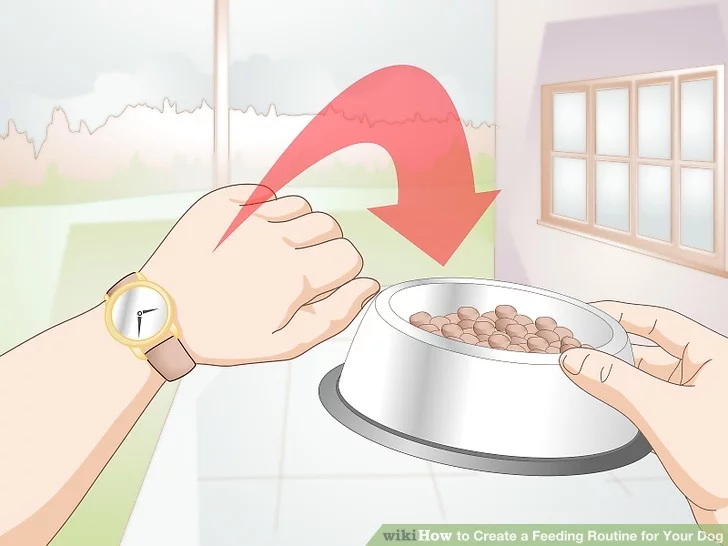Establishing a consistent feeding routine is essential for maintaining your pets’ health and happiness. Whether you have a dog, cat, or a combination of pets, a well-organized feeding schedule can help regulate their digestion, prevent overeating, and strengthen the bond between you and your furry companions. This article provides a comprehensive guide to organizing your pets’ feeding routine, from understanding their nutritional needs to implementing practical strategies for a stress-free mealtime.
Understanding your pet’s nutritional needs
Every pet has unique dietary requirements based on their species, age, size, activity level, and health conditions. Dogs and cats, for example, require different nutrient compositions in their diets. Dogs are omnivores and need a balanced mix of proteins, fats, carbohydrates, vitamins, and minerals. Cats, on the other hand, are obligate carnivores with a diet primarily focused on animal-based proteins and fats.
It’s important to consult a veterinarian to determine the specific dietary needs of your pets. They can recommend appropriate types and amounts of food, considering factors like breed and health conditions. For pets with medical issues, specialized diets may be necessary to manage conditions such as diabetes, obesity, or kidney disease.
Choosing the right type of food
Pet food comes in various forms, including dry kibble, wet canned food, and raw or homemade diets. Each has its benefits:
- Dry food: Convenient and cost-effective, with the added benefit of promoting dental health in dogs and cats.
- Wet food: Higher moisture content, making it an excellent choice for pets with hydration issues or picky eaters.
- Homemade/raw diets: These can be tailored to your pet’s needs but require careful preparation to ensure nutritional balance.
Always select high-quality food, and check labels for essential nutrients like protein, fat, and vitamins. Avoid brands with excessive fillers or artificial additives.
Establishing a feeding schedule
Consistency is key when organizing your pet’s feeding routine. Pets thrive on predictability, and a regular schedule can improve their overall well-being.
- Determine feeding frequency
- Puppies and kittens: Require 3–4 small meals per day due to their high energy needs and smaller stomachs.
- Adult dogs and cats: Typically do well with 1–2 meals daily.
- Senior Pets: May benefit from smaller, more frequent meals depending on their health.
- Set fixed meal times
Feeding your pets at the same times each day helps regulate their metabolism and digestion. It also prevents begging or scavenging for food throughout the day. - Portion control
Measure each portion based on your pet’s size, age, and activity level. Overfeeding can lead to obesity and related health problems, while underfeeding may cause malnutrition. Use a measuring cup or scale for accuracy.

Managing multiple pets
If you have more than one pet, organizing their feeding routine requires additional considerations:
- Separate feeding areas: To prevent food aggression, feed pets in designated spaces where they feel safe and can eat without interference.
- Individual diets: Ensure each pet receives the appropriate type and portion of food. This is especially important if you have pets with different dietary needs.
- Supervised meals: Monitor mealtime to ensure that one pet doesn’t eat another’s food.
Incorporating treats and snacks
Treats are a valuable tool for training and rewarding good behavior, but they should not disrupt your pet’s diet. Limit treats to no more than 10% of their daily caloric intake. Opt for healthy, pet-safe options like small pieces of cooked meat, fruits (e.g., apple slices), or vegetables (e.g., carrot sticks). Avoid foods that are toxic to pets, such as chocolate, grapes, onions, and garlic.
Hydration is crucial
Adequate hydration is essential for your pet’s overall health. Dogs and cats need constant access to fresh, clean water. For cats, who are naturally less inclined to drink water, incorporating wet food or using a water fountain can encourage better hydration.
Adapting the routine over time
As your pet grows and their needs change, so should their feeding routine. Puppies and kittens transition to adult diets around 12 months, while senior pets may require special formulas tailored to their aging bodies. Monitor their weight, activity levels, and overall health regularly to make necessary adjustments.
Additionally, life events such as moving, adding a new pet, or changes in your schedule may require tweaks to the routine. Introduce changes gradually to minimize stress for your pets.
Dealing with feeding challenges
Some pets may develop issues related to eating, such as picky eating, food aggression, or rapid eating. Here’s how to address these common challenges:
- Picky eaters: Try different flavors or textures of food, and avoid overfeeding treats that might make regular meals less appealing.
- Food aggression: Feed pets separately and work with a trainer to address aggressive behavior.
- Rapid eating: Use a slow-feeder bowl or puzzle toy to encourage slower eating and reduce the risk of choking or digestive issues.
Benefits of a well-organized feeding routine
A structured feeding routine offers numerous advantages:
- Improved digestion: Regular mealtimes promote better digestion and reduce the risk of gastrointestinal issues.
- Weight management: Controlled portions prevent overfeeding and help maintain a healthy weight.
- Behavioral benefits: Pets become less anxious or demanding around food when they know when to expect their next meal.
- Stronger bond: Feeding time provides an opportunity for interaction and strengthens your relationship with your pet.
Organizing your pet’s feeding routine is an essential part of responsible pet ownership. By understanding their nutritional needs, choosing the right food, and establishing a consistent schedule, you can ensure your pets enjoy a healthy and balanced diet. Remember, every pet is unique, so be attentive to their behavior and health, and make adjustments as needed. With proper planning and care, mealtime can become a joyful and stress-free part of your daily routine, fostering a happy and harmonious relationship with your furry friends.